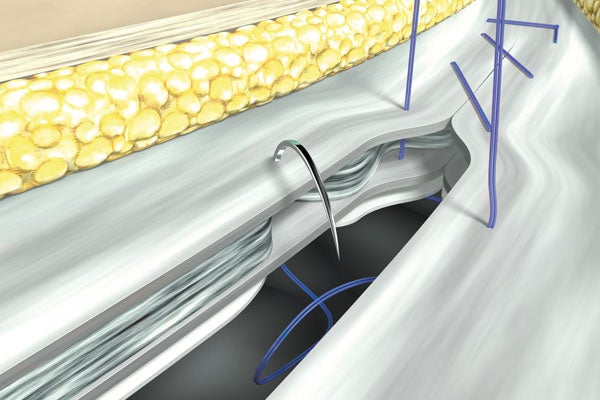Knot security
Knot fixation is a determining factor with surgical threads as it guarantees the security of the wound. Knot fixation capacity depends on certain parameters: the thread stiffness, coefficient of friction, elasticity and plasticity. In addition to these parameters, knot fixation differs according to whether the thread is monofilament or braided. Monofilament sutures are usually stiffer than braided ones, especially in the larger gauges. Their perfectly smooth surface has a lower coefficient of friction and better glide. These two characteristics, stiffness and glide, are the reason why, in general, knot fixation is weaker with monofilament sutures than with braided ones. This concept, however, needs qualifying, especially in view of the plasticity of certain monofilament sutures.
Indeed, certain monofilament sutures such as Monosyn® have the property of bending when the knot is being tied, which increases its fixation.
For greater stiffness, a knot should have at least 3 loops with 3 mm-long ends.
Soft surfaces reduce knot security and this must be offset by extra loops. [1]
Knots
The knot holds the suture in place. It consists of several loops.
Each type of suture and each thread gauge have their own means of knot-tying, which should be taken into account for the purpose of ensuring greater knot security.
It is commonly accepted that 4 knots are necessary for securing a braided suture and 6 to 8 knots are required in the case of a monofilament suture.
[1] Hochberg J, Meyer KM, Marion MD.; Suture Choice and Other Methods on Skin Closure; Surg Clin North Am. 2009 Jun;89(3):627-41.

